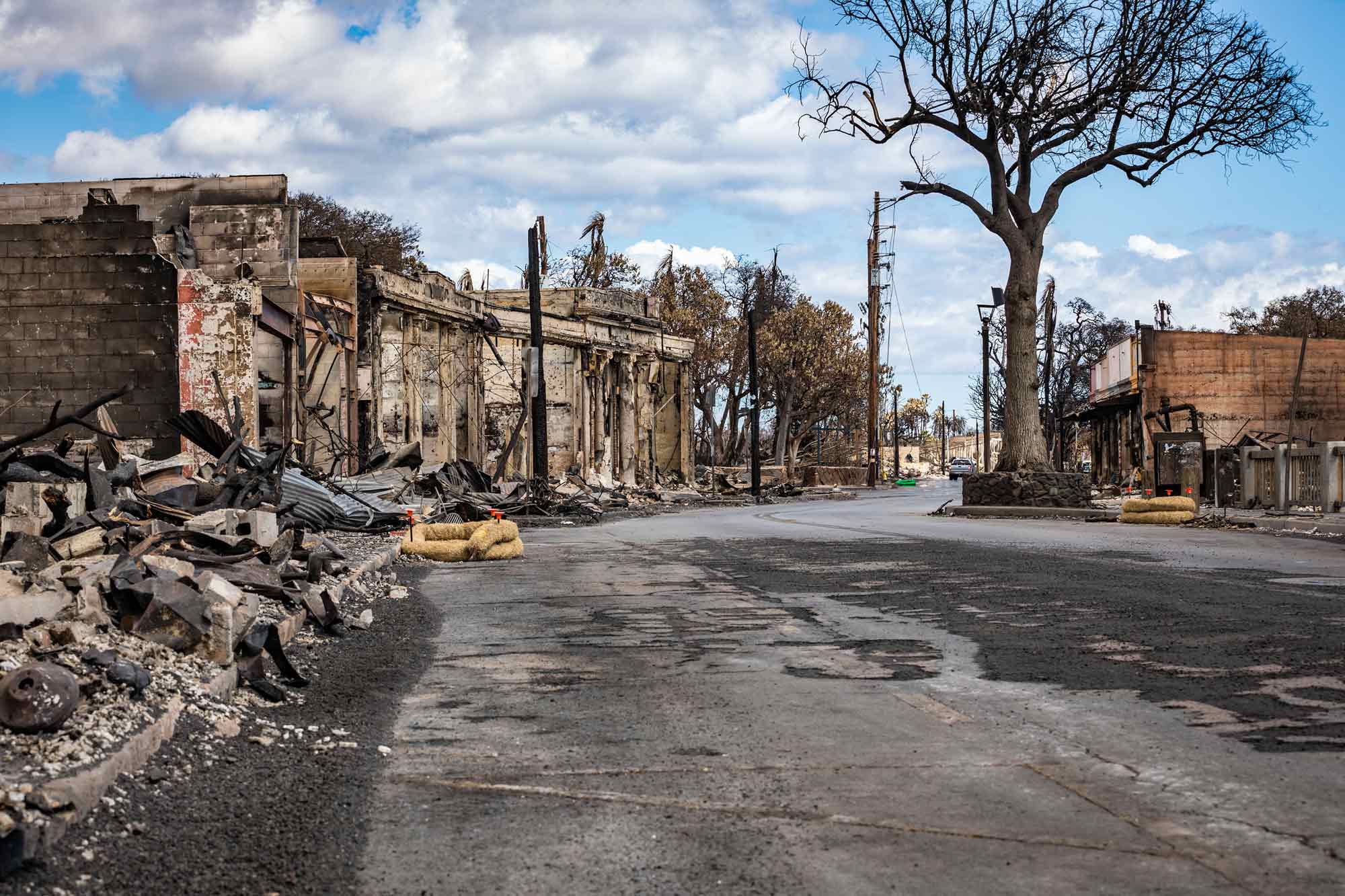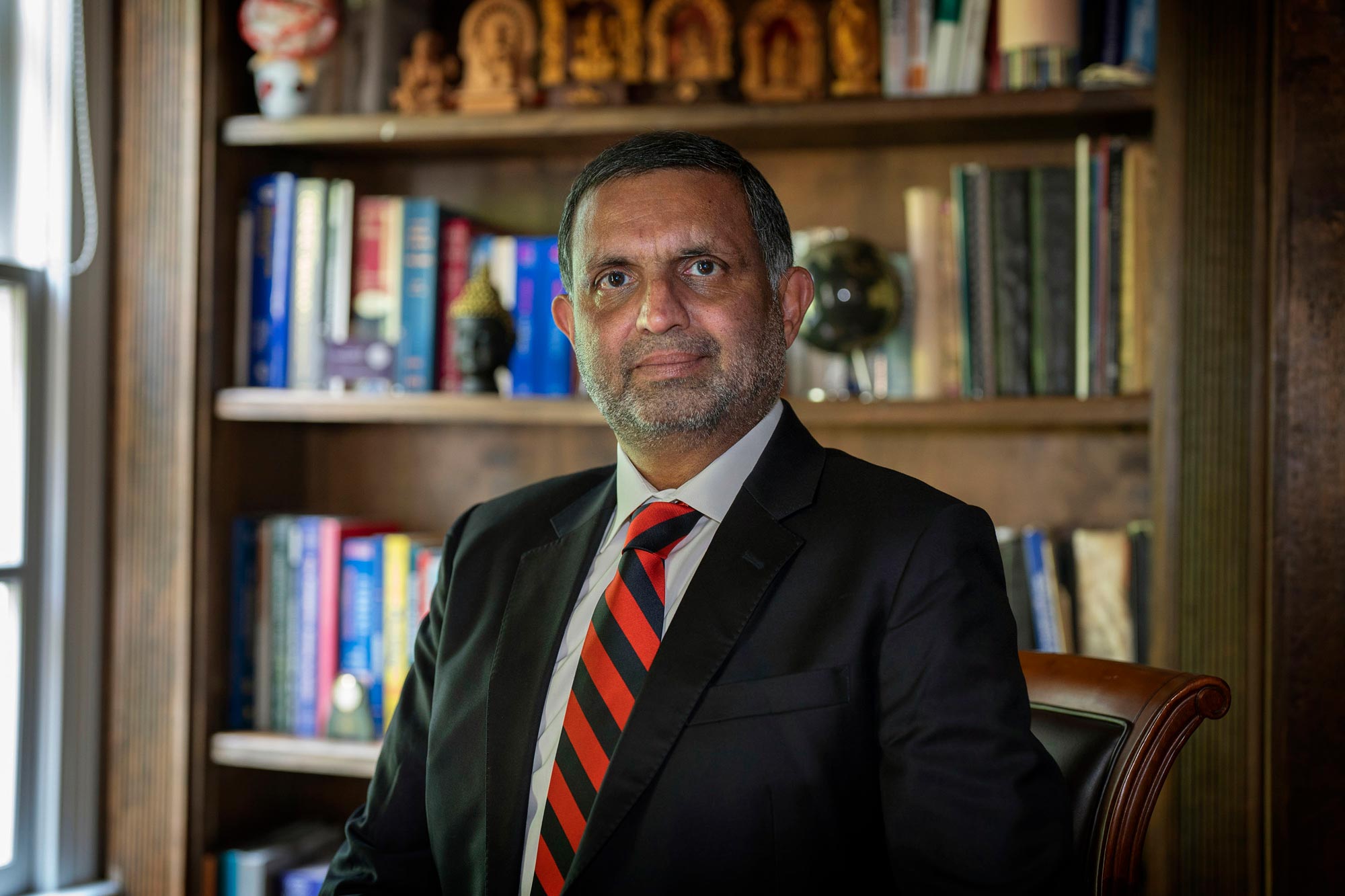
In the aftermath of the Maui fires, government now looks to better understand the conditions that led to the disaster. (U.S. Department of Defense photo)
As the island of Maui continues to sift through the rubble of the most devastating wildfires in Hawaii's history, many residents say they never saw it coming.
The disaster, however, wasn't entirely without warning, said University of Virginia engineering professor Venkataraman Lakshmi, who is also president-elect of the hydrology section of the American Geophysical Union.
Major news outlets, including The Associated Press and Reuters, have sought Lakshmi's hydrology expertise to help explain how the Maui fires spread so quickly.
The fires, he said, were a result of the overgrowth of non-native grasses and severe weather conditions, including one in which Lakshmi is expert - a "flash drought." The professor said the phenomenon happens when the land surface dries out very quickly over a short period, usually within two to four weeks.
"The streams go from running water to no streamflow at all," he said.
In the process, the grasses and soil, too, get sucked dry.
"The grasses introduced for forage in Maui are invasive species and have taken over abandoned sugarcane plantations," he said. "In these conditions, the vegetation dried out and became flammable."
The conditions were due to a combination of low or no rainfall, high air temperatures and active winds that increase water's uptake into the atmosphere, he explained. The normal water cycle essentially gets stuck.
"In May, the island was 'normal' with respect to conditions. By August, some drying had occurred - not too much," he said. "But between Aug. 1 and 8, the whole region was under abnormally dry conditions or worse."
Winds from Hurricane Dora, along with some source of natural or human ignition, caught the grasses on fire and "advanced them very quickly."
The extremes of how flash droughts affect the landscape can be observed even after the fires.

"You can see in pictures of Maui that some of the taller trees are still green and standing and the fires went around them and destroyed homes, automobiles and took precious lives," Lakshmi said. "The taller trees were higher and may have been healthier and 'wetter' than the grasses and did not burn as easily."
Scientists named and began to focus on flash droughts - inspired by the more familiar "flash floods" - about 20 years ago. Since then, the phenomenon has been on the rise, and it's only going to increase due to climate change, Lakshmi said.
"With the increase in hydrological extremes, they will occur almost everywhere," he said.
Lakshmi said though understanding the rapidly changing factors behind flash droughts may result in better future responses, "We cannot predict ignition. Just because there's a flash drought doesn't mean the grass has to burn. We can, however, predict the dryness of the soil and vegetation."
Maui's inferno is just one of a number of major fires across the globe this year - including blazes in Chile, Greece and, ongoingly, in Canada and California.
Droughts and the fires that sometimes follow are related to other natural hydrological changes, the professor said. These can include flooding, landslides, permafrost thaw and hurricanes.
Maui's next worry is landslides and runoff, because the burned soil prevents water infiltration.
"They're called compound hazards, and they don't bode well for the people who live there," he said.
Currently, Lakshmi has a project funded by the Army Research Office. His team will look at data from previous U.S. flash droughts and apply artificial intelligence machine learning tools to extrapolate to how watersheds in Africa and Asia, such as the Nile River, may be affected in the future.
"These include watersheds that run between countries that could cause conflicts due to low availability of water," he said.
Lakshmi is the John L. Newcomb Professor of Engineering in UVA's Department of Civil and Environmental Engineering.






